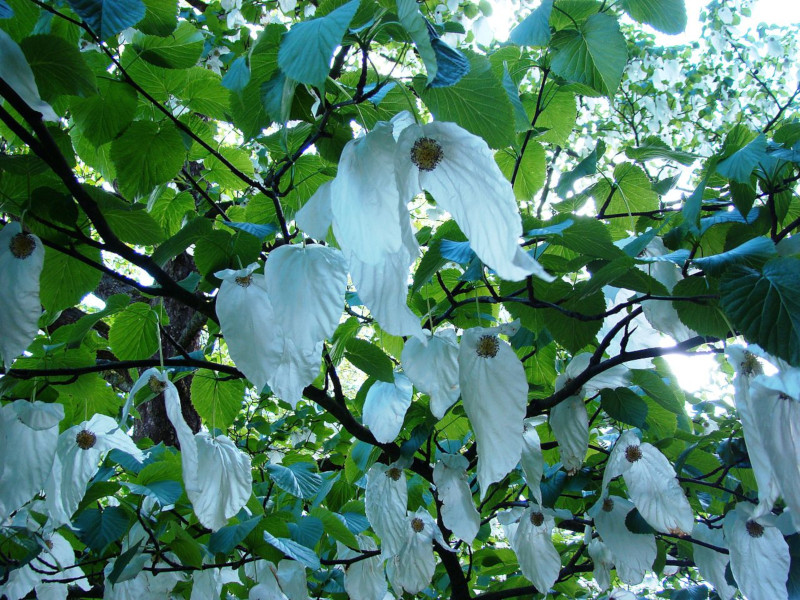
Dove Tree Facts
- The appealing term of Dove Tree succinctly serves as one of several common names for an especially lovely variety of tree. This flora also goes by such alternate common names as the ghost tree, handkerchief tree, and the pocket handkerchief tree.
- Among professional botanists, however, it bears another, somewhat less descriptive term, that being the scientific name of Davidia involucrata. Regardless of which term you use, though, this tree stands out for more than just its great beauty.
- Added to that great visual appeal, this distinctive plant also currently remains the only member of its entire genus. It bears its official name in honor of Father Armand David, a French missionary, who first officially described the species, in 1869.
- Quite thankfully, this wonder of Nature appears to still be reasonable abundant within its native range. It has also been widely cultivated as an ornamental plant. The IUCN, therefore, currently has no listing for it on the Red List of Threatened Species.
- Those specimens of the delicate Dove Tree growing in the wild must nonetheless be considered to facing at least some danger. Habitat loss poses a potential threat, as it does to many species, but climate change likely represents its greatest danger.
Related Articles
Dove Tree Physical Description
The great beauty of the wonderful Dove Tree isn’t its only impressive attribute. This remarkable specimen of flora also attains a moderately large size, especially for a tree considered as an ornamental species, attesting to its great appeal to mankind.
While exceptional specimens do exist, of course, an average height measure between 66 – 82 ft (20 -25 m). Yet another impressive feature remains its rate of growth. Although not the fastest-growing type of tree known, it nonetheless ranks as above average in this.
Its foliage also attracts the attention, with its unique, roughly heart-shaped leaves. These typically reach a size measuring 4 – 8 in (10 – 20 cm) in length, and 2.75 – 5.9 (7 – 15 cm) in width. The fruit, meanwhile, develops as a hard nut, about 1.2 in (3 cm) in length.
But the Dove Tree remains best known for its gorgeous blooms, from which its common name derives. These develop as part of a group, known as an inflorescence. Once formed, the flowers display a bright white color, and shape some consider to resemble a dove.
- Kingdom: Plantae
- Phylum: Angiopserm
- Class: Eudicots
- Order: Cornales
- Family: Nyssaceae
- Genus: Davidia
- Species: D. involucrata
Dove Tree Distribution, Habitat, and Ecology
The beautifully evolved example of flora known as the Dove Tree only possesses a moderate-sized habitat range. That range, however, happens to be a region of the world already well known for its abundance and great diversity of life, both fauna and flora.
This particularly lovely and unique Angiosperm evolved as endemic to a very specific portion of the expansive continent of Asia. Within that geographical area, the plant appears naturally in only the south central and southwest portions of the country of China.
More specifically, it inhabits an area that includes the provinces of Hubei, southern Gansu, Guizhou, Sichaun, and Yunnan. Quite sadly, though, even within this range, the known population groupings of this remarkable species of tree seem comparatively scattered.
Its precise habitat varies across its range, as well, though certain ones predominate. Individuals and groves appear in both temperate forests and alone. These also develop at altitudes of as much as 6,562 ft (2,000 m), and in such harsh conditions as within gorges.
The blooms of the magnificent Dove Tree develop in the local Spring season, and typically reach their peak around the month of May. Pollination of this species considered a living fossil, occurs via the action of various insect species, most notably local bee species.
Species Sharing Its Range
Check out our other articles on 4 Amazing North American Deserts, Black-and-white hawk-eagle, Bay of Islands, Sangai, Western Juneberry, Lord Howe Island Stick Insect, New Guinea Crocodile
